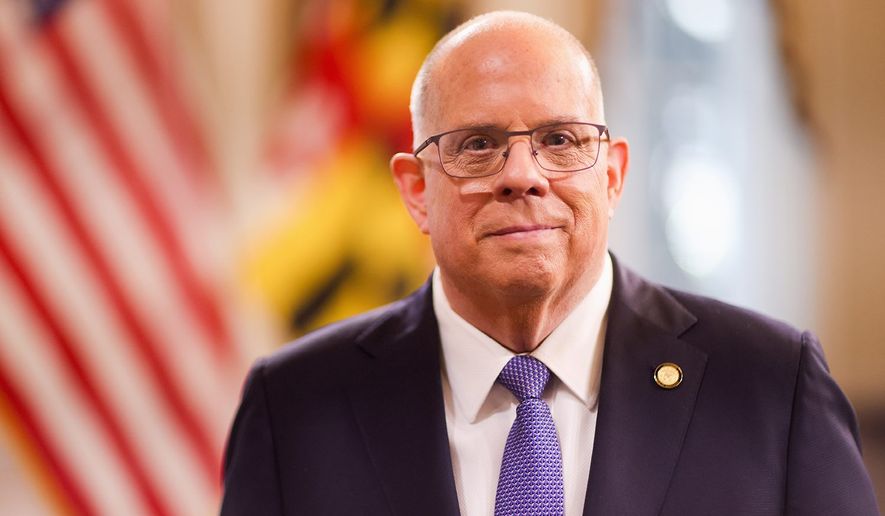OPINION:
Since I took office more than six years ago, building a strong, reliable, and efficient transportation system has been one of my top priorities. Now, facing one of the worst public health emergencies in our country’s history, it is more important than ever that we invest in our transportation infrastructure. Investing in infrastructure will help fuel our economic recovery, create thousands of jobs, and produce a transportation system that will benefit residents and businesses for generations to come.
A safe and efficient transportation system is critical for our working families and job creators to thrive.
In Maryland, our transit systems transport healthcare workers and other essential personnel every day to the front lines in the fight against COVID-19. Our highways and toll facilities enable the movement of goods and people. BWI Thurgood Marshall Airport and the Port of Baltimore bring in important cargo from all over the world for distribution to homes and businesses. And our motor vehicle services keep commercial operators on the road, supporting a critical link in the supply chain.
It is absolutely critical that we support and grow our transportation network, even with the financial challenges brought on by COVID-19. Maryland’s Transportation Trust Fund took a devastating hit last year as revenue sources dropped due to historic reductions in travel volumes across our transportation system. While these travel volumes have started to rebound, the damage has already been done. During times like these, we must be innovative. Innovation drives growth, progress, and long-term success. We need to use technology and data to guide our decisions, but we also must develop new approaches, forge new partnerships, and stretch every tax dollar that is entrusted to us.
One solution is public-private partnerships, also known as P3s. By using P3s, states can leverage the power and creativity of the private sector to fund and develop major projects that solve real challenges, provide a foundation for growth and prosperity, and maximize vital transportation dollars.
Maryland has had great success with P3s. Thanks to a P3 agreement between the Maryland Department of Transportation’s Maryland Port Administration and Ports America Chesapeake, the Port of Baltimore has seen record growth and is poised for more in years to come. Key cargo commodities at the port’s public terminals were down for the year compared to 2019, but the port’s strong recovery in the second half of 2020 helped narrow those declines dramatically. It was through this partnership that we will be able to add a second 50-ft berth at the port this year, and we are also in the process of removing the last pinch point for double-stacked containers on rail along the East Coast by expanding the Howard Street Tunnel—another P3 made possible through investments from CSX, state, and federal transportation dollars.
Today, we’re in the middle of complementary P3s that will greatly enhance both our transit and highway systems in the National Capital Region, some of the most congested in the nation. The Purple Line is a 16.2-mile light rail line under construction in Montgomery and Prince George’s counties. We’re also working to build a new American Legion Bridge across the Potomac River, add high-occupancy toll lanes across the bridge and up I-270, and improve transit as well as bicycle and pedestrian access along these heavily traveled corridors through a progressive P3.
These projects are substantial leaps forward for Maryland, and we wouldn’t be able to do it without partnering with the private sector. Without a P3 approach, these projects would not be feasible for decades. Financially, the American Legion Bridge would divert critical dollars from other areas when that replacement comes due, for simply replacing the bridge and not providing that needed congestion relief. An important interstate connection between two states, which carries more than 250,000 travelers a day, is not a choice investment. The progressive P3 we are pursuing relieves our Transportation Trust Fund of that obligation, stretching dollars even further.
Until recently, I served as chairman of the National Governors Association. In that leadership role, I released a series of principles to help strengthen the state-federal partnership on infrastructure, which is key to building a strong and sustainable national economy in the aftermath of the COVID-19 pandemic.
My initiative was built around four pillars to identify and promote state best practices in infrastructure:
• Relieve congestion to boost economic competitiveness;
• Enhance efficiency by eliminating red tape and integrating smart technology;
• Strengthen security and resiliency by protecting America’s critical infrastructure from disaster and cyber threats;
• Finance for the future by leveraging private sector investments.
Looking ahead, we will continue to follow these pillars and develop creative solutions to Maryland’s transportation challenges, but we also need the federal government to step up to the plate. The previous administration failed to deliver on a federal infrastructure package, and so it is my hope that the new administration will reach across the aisle to deliver what they couldn’t.
The bottom line: the current federal system to deliver infrastructure is failing. The American people deserve better. They deserve infrastructure they can be proud of through sustained investment. They deserve an investment in our nation that helps our economy thrive. They deserve real, lasting relief driven by common sense decision making.
Together, we have an opportunity to create a world-class transportation system—one that will serve as an example across the globe for many years to come. It’s time to get Maryland and America moving again.
• Governor Hogan is the 62nd governor of Maryland and is only the second Republican governor to be re-elected in the history of the state. He previously served as chairman of the National Governors Association. Prior to his gubernatorial bid, he founded Change Maryland, Inc., a nonprofit focused on “public policy development, issue advocacy [and] grassroots organizing in the state of Maryland.” In his 2021 State of the State address, Gov. Hogan said, “Maryland has indeed been setting a shining example for the rest of America.”




Please read our comment policy before commenting.